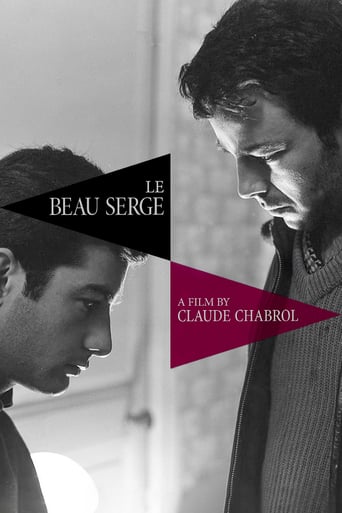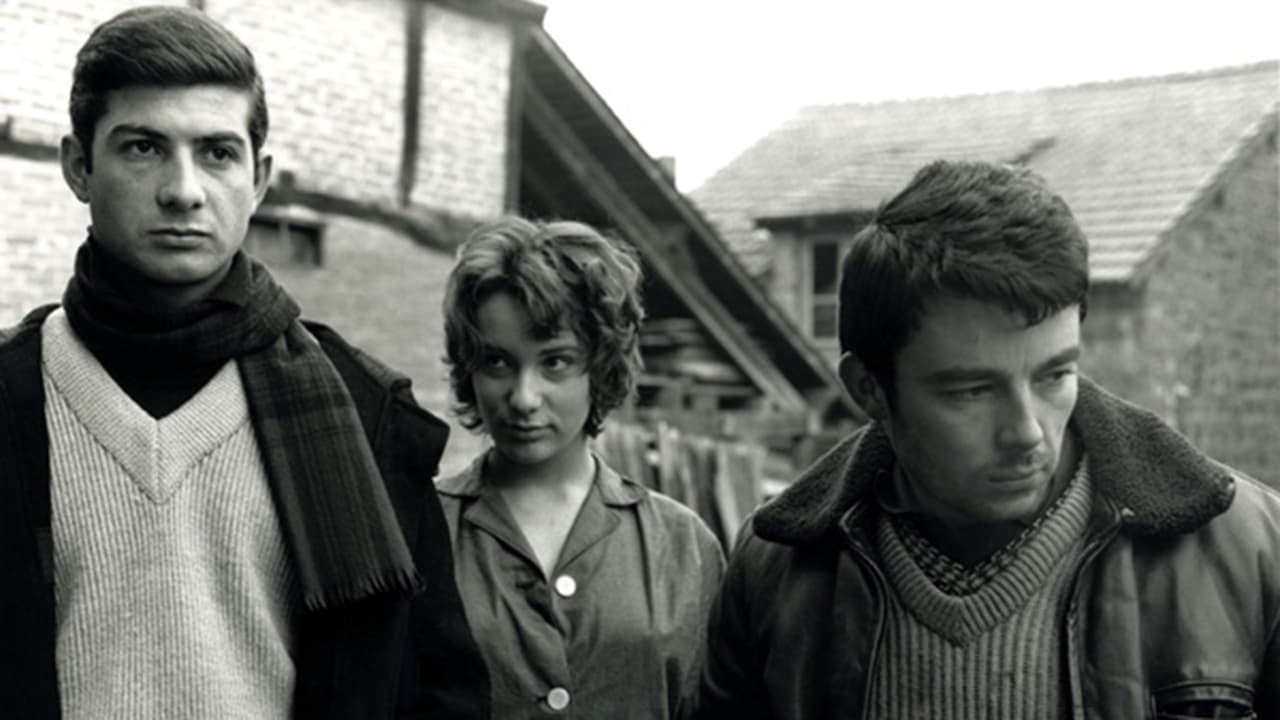dlee2012
Whilst some consider this film the first offering from the nouvelle vague movement, in truth it shares only some hallmarks with the offerings Godard, Truffaut and colleagues would start to produce over the next few years. Devoid of subversive humour or techniques 9such as jump-cuts) to highlight its artifice as a film, it is really a pre-cursor to the movement than a fully-fledged nouvelle vague film.Nevertheless, this is a good solid outing from Chabrol that meditates on how one can effectively be a good samaritan.The story tells of how a theology student returns to his home town after studying at a seminary for several years. Confronted with endemic social problems stemming from poverty and alcoholism he attempts to help his friends but, as happened to the protagonists in Beckett's Waiting for Godot, his charitable efforts are frequently rebuffed and the person he is trying to help lashes out against him.Where Chabrol does pre-empt the nouvelle vague movement is in his use of amateur actors, hand-held cameras and outdoor settings. This gives the film a documentary-like feel at times. It instills a feeling that this is a genuine record of the problems facing an extremely insular town gripped by despair due to an economic downturn, the hopes of its youth dashed. Having grown up in a similar environment in Tasmania some thirty years later, this reviewer can testify to the accuracy of what Chabrol is trying to convey with this work.Serge is also realistically drawn, at times warm and at times petty and jealous, lashing out at those around him in frustration as he is unable to face his own weaknesses, caught in the double-trap of alcoholism and a demeaning marriage to an uncaring woman.The protagonist, François, is a saintly martyr. He quickly finds that his academic training in the seminary is of little use in dealing with real-world problems and that he must give more and more of himself in his new calling to help those who cannot or will not help themselves.As another reviewer noted, there is a lot of doubling of scenes throughout this film, with the two cemetery scenes and two fights, in particular, reinforcing the structure of the film and developing Chabrols' themes.It can be argued that Serge and François are doppelgangers, one having escaped the trap of the town for the wider world and having kept his faith while the other remained behind and stagnated. In some ways, though, François has been kept in just as insular an environment in the form of the seminary and it is return to the outside world that lets him assimilate the two and truly blossom as a human being. Their doppelganger nature is also reflected in the fact that both Serge and François also have similar tastes and jealousies over women and conduct affairs at the same time.This small, quiet film is highly recommended in its portrayal of how the social fabric of a town can come unraveled when people give up hope and how the man who left returns to save them but can only do so when, Christ-like, he gives his all.
MARIO GAUCI
The film that officially kick-started the "Nouvelle Vague" (interestingly, Chabrol was the only one in that talented crowd to have debuted with a full-length feature and self-financed to boot!) is, surprisingly, an "Angry Young Man"-type drama in a pastoral setting. The radical technique associated with this school of film-making is not really in evidence in this case, but nor is it needed – given that what we have here is essentially a character-driven piece.In this respect, apart from the director himself (who also wrote the film on his own), the film brought in an array of fresh talent in front of the cameras as well – namely Gerard Blain (evoking Montgomery Clift in particular), Jean-Claude Brialy (restrained in comparison to his other work for Chabrol that I have watched) and the waif-like Bernadette Lafont (already effortlessly exuding carnality in her second film – and the first of 7 with this director – she was also married to her co-star Blain at the time).Chabrol's realistic depiction of provincial France here, authentic both in the everyday detail of the locale and its characters' foibles (Blain is a hopeless drunk, Lafont is raped by her 'father', etc.), actually makes the much-later THE HORSE OF PRIDE (1980) not the odd-film-out it had at first appeared! One other atypical element is that of spirituality – especially when, towards the end, Brialy determines (albeit predictably) to reform Blain almost at the cost of his own life during one particularly blizzard-ridden night in which his friend is supposed to become a father! By the way, Chabrol gives himself a cameo in the film: with him appears assistant director Philippe de Broca (whose character is named Jacques Rivette, after another "New Wave" exponent, obviously!); unfortunately, the subtitles – in a small white font – were especially hard to read during this scene.
lionel.willoquet
Suffering from a bronchial infection, Jean-Claude Brialy, a young Parisian, seeks convalescence in his home village in the Creuse, where he hasn't set foot for 10 years. There he meets up with his former friend, Gerard Blain, who, despite a brilliant adolescence and a bright future, has ended up in a drunken stupor after his marriage. The first film by Claude Chabrol, who launched the New Wave with this bitter account of rural life, perfectly constructed, and served with the talent of Jean-Claude Brialy and Bernadette Laffont.
Spleen
If this was indeed the first film of the New Wave then it has a lot to answer for. Unless there are other causal influences I don't know about, the New Wave destroyed French cinema. Old wave films like Carné's "The Children of Paradise" (1943), Clouzot's "The Wages of Fear" (1953), and Tati's "My Uncle" (1958) make Truffaut, Renais and Chabrol look earthbound and dreary. As, by and large, they are. (Even in the years after 1959 France's best films had little to do with, and owed little to, the New Wave.) But "Beautiful Serge" is at least a nice little film, only somewhat earthbound, and not so dreary at that.An earlier reviewer has complained about the music; and, indeed, at the screening I attended there were some people up the back determined to chortle at what they perceived to be musical heavy-handedness. A cheap response would be that the film needed SOMETHING to lift it above the level of a 7-Up documentary. A fairer response would be that this is a story in which the theological significance of the hero's actions shines through a mundane surface, and the score serves to express that, too. It's the faint but real sense of fantasy that keeps "Beautiful Serge" very much alive.


 AD
AD


